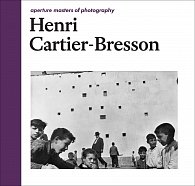Aperture is pleased to present the elegantly updated and refreshed Henri Cartier-Bresson edition of the Aperture Masters of Photography Series. With an introduction by notable curator Clément Chéroux, this edition includes new, image-by-image commentary and a chronology of this influential and iconic artist’s life. Initially presented as the History of Photography Series in 1976, the first volume of the Masters of Photography Series featured Cartier-Bresson and was edited by legendary French publisher Robert Delpire, who cofounded the series with Aperture’s own Michael Hoffman. In this redesigned and expanded version of the classic Aperture book, we have kept the majority of the selection of images from the original series which Cartier-Bresson himself created with Delpire, encapsulating the spontaneity and intuition for which this legendary photographer is so celebrated.Henri Cartier-Bresson (born in Chanteloup, France, 1908; died in Montjustin, Alpes-de- Haute-Provence, France, 2004) began his career in photography in 1930. A pioneer of the documentary photography genre, he was one the founders, along with Robert Capa, of the pho- tography agency Magnum. He is considered one of the major artists of the twentieth century, and his work has appeared in hundreds of publications, museums, and galleries around the world.Clément Chéroux (introduction and commentary) is a photography historian and has been the curator of the photography collection at the Centre Pompidou, Paris, since 2007. He has curated and cocurated numerous photographic exhibitions, including Mémoire des camps: photographies des camps de concentration et d’extermination nazis, 1933–1999, Hôtel de Sully, Paris, 2001; and Le troisième oeil: La photographie et l’occulte (The Perfect Medium: Photography and the Occult), at the Maison Européenne de la Photographie, Paris, 2004, and Metropolitan Museum of Art, New York, 2005. He is the editor of the journal Études photographiques.




 Když teď objednám,
Když teď objednám, 


































